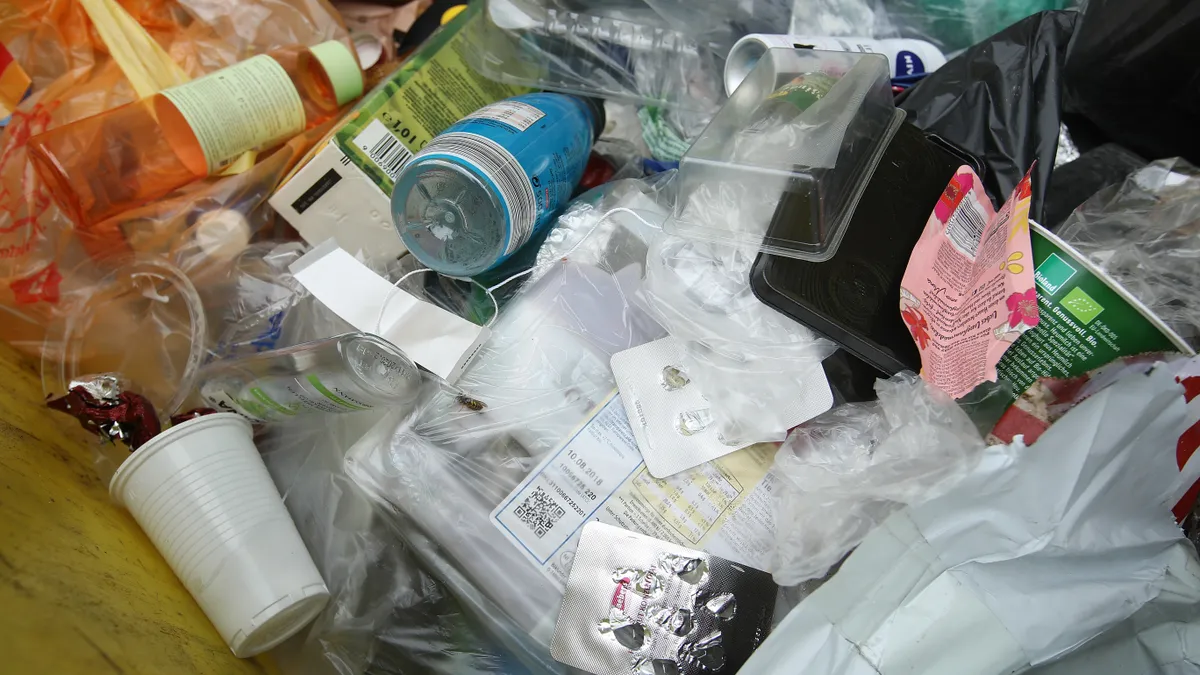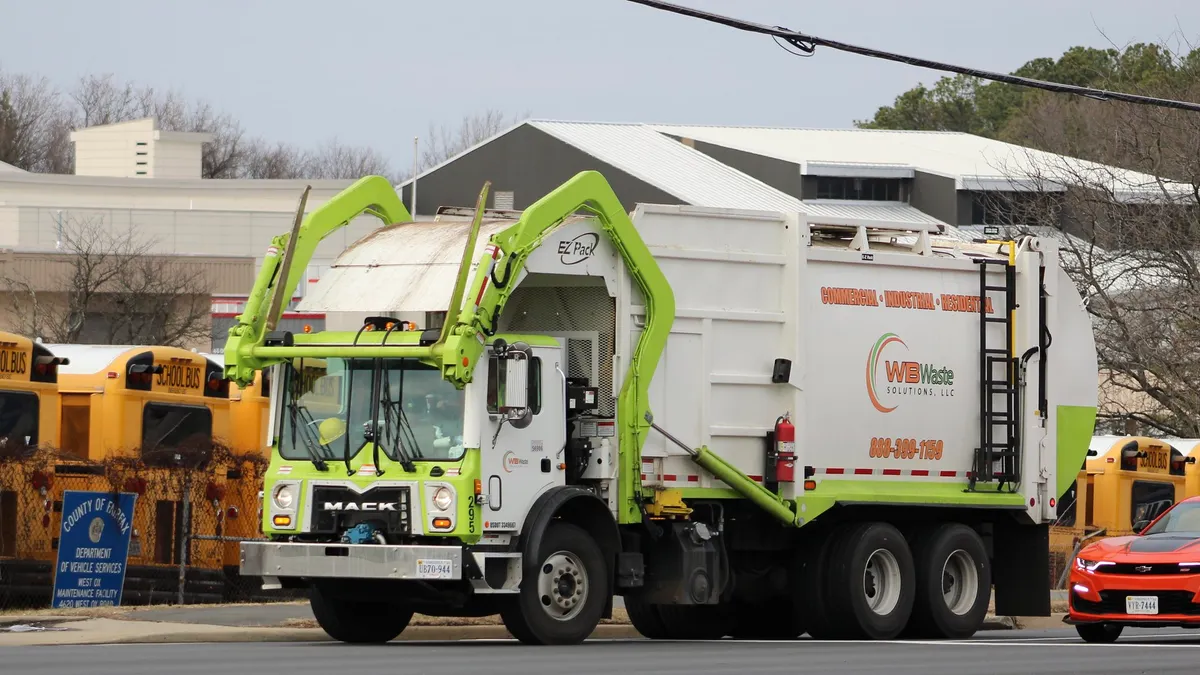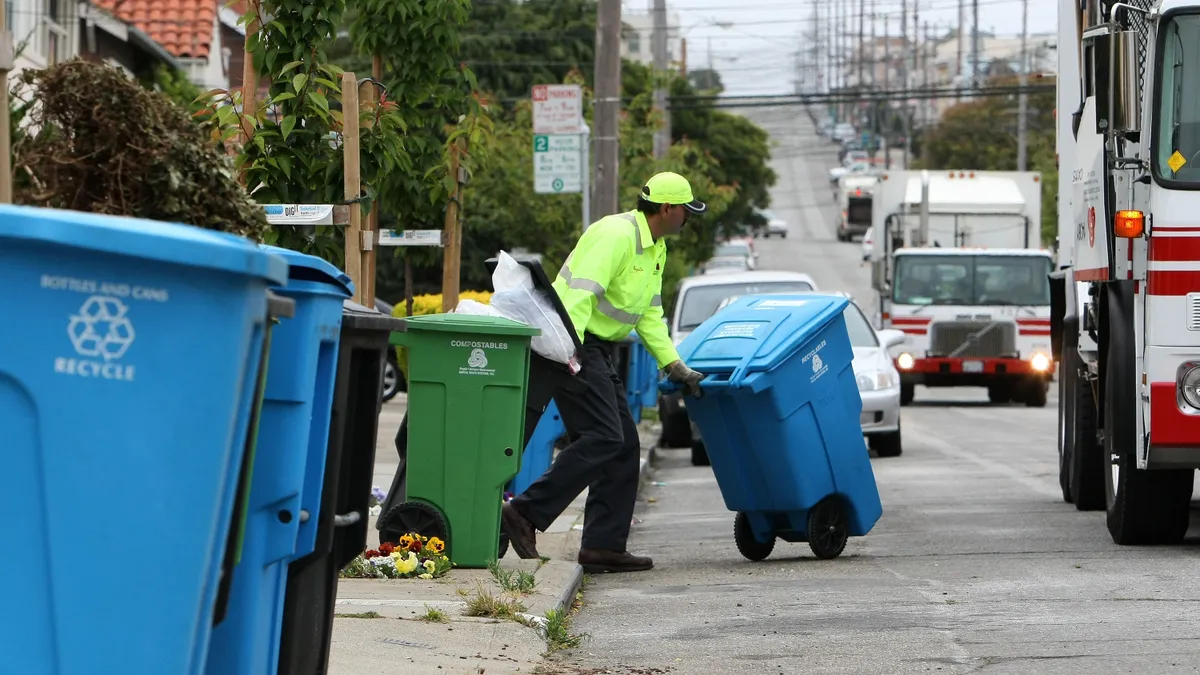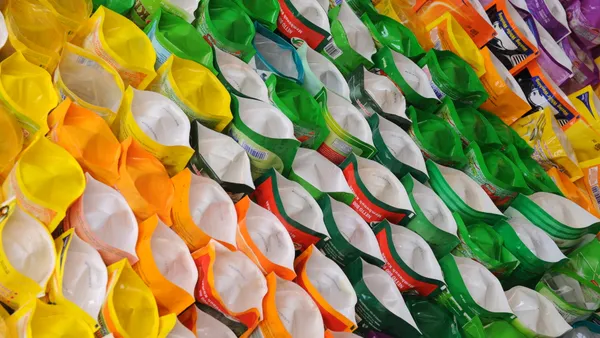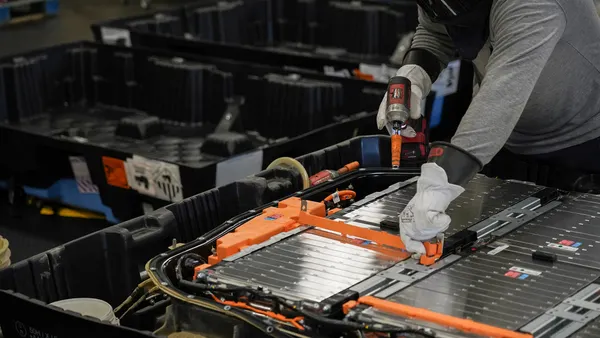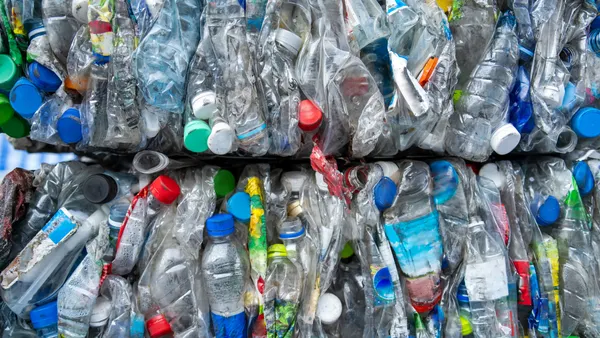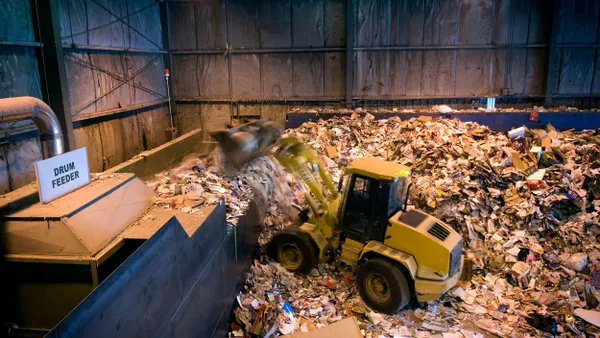Dive Brief:
- The Canada Plastics Pact showed some progress toward its 2025 goals, including reducing the use of plastic packaging considered “unnecessary or problematic” and designing more kinds of packaging to be recyclable, according to its most recent 2023-2024 impact report released in mid-December.
- The report also notes incremental progress on its goal to recycle or compost at least 50% of all plastic packaging. The recycling rate for plastic packaging in 2022, the year with the latest available data, was 16%.
- In a related Plastic Packaging Flow report, CPP offered more information on how it calculates the nationwide plastic packaging recycling rate. It noted that the 16% recycling rate is lower than the 20% previously reported in its 2022 impact report because its methodology now includes data from the industrial, commercial and institutional sectors, which typically have lower recycling rates.
Dive Insight:
CPP, made up of about 100 members from brands and recycling groups, aims to curb plastic waste and pollution through four main targets outlined in its Roadmap to 2025 plan. CPP is a member of the larger Ellen MacArthur Foundation’s Global Plastics Pact network, a set of country-based groups working in tandem on similar goals.
Canadian partners include the Solid Waste Association of North America, Association of Plastic Recyclers, EFS Plastics, Walmart, Unilever and others.
CPP’s annual report comes just after its U.S. counterpart, the U.S. Plastics Pact, released its own progress report that touched on similar goals.
CPP noted in a news release that progress on its goals is “slower than anticipated,” but added that collaboration between partners has helped the group advance. It also said that newly available data has helped paint a more accurate picture of the nation’s plastic recycling stream.
“The data shows that while there’s still work to be done to achieve our mission and vision, we are on the right track,” said Catherine O’Brien, Canada Plastics Pact’s president and board chair, in a statement.
CPP’s plastics flow report shows that in 2022, Canada’s deposit return system had a 60% recycling rate in 2022, down from 63% in 2019. The residential sector’s rate stayed flat at 16%.
Canada generated 1.96 million metric tons of plastic packaging in 2022, nearly 3.6% more than it did in 2019, the year of CPP’s baseline report. CPP also attributes that rise in packaging to the report’s new inclusion of ICI-generated plastics.
Canada generated 17% more rigid plastic packaging and recycled 2% less of that material in 2022 compared with 2019. Conversely, the country generated 6% less flexible plastic and recycled 13% more of it in 2022 compared to 2019.
The flow report notes that while the country is improving flexible packaging recycling, more work is needed due to “challenges with its collection, sorting, and final recycling.” It called for companies to improve packaging design, but it noted that “a switch from flexible to the more recyclable rigid packaging is not likely to solve this issue.”
Nationwide recycling advancements, including for extended producer responsibility and container deposit systems, are expected to help improve plastic recycling in future years, including for flexibles, the report states.
The recycling rate for the ICI sector was 11%. This sector “has not yet been comprehensively studied,” CPP said in the report summary. Future opportunities to improve ICI sector recycling could include targeting recycling solutions for key subsectors, such as food service, manufacturing and health care.
Along with reporting on its recycling rate goal, CPP’s main impact report also charted partners’ 2023 progress toward its three other main 2025 goals.
- 4%: The percentage of CPP partners who still had 10 packaging items in their portfolio defined as “unnecessary or problematic.” The goal is to eliminate 13 types of plastic packaging on this list. CPP developed a guidance document in April 2024 to help partners continue to meet this goal.
- 50%: Percentage of plastic packaging placed on the market by CPP partners that is designed to be reusable, recyclable or compostable. That’s up from 43% in 2022; the goal is 100%.
- 10%: The amount of postconsumer recycled content, by weight, across plastic packaging used by CPP partners in 2023. This is a 2% decline in PCR use compared to the 2022 report. The goal is for such packaging to have at least 30% recycled content. CPP noted limited access to PCR supply, along with higher costs for recycled content compared to virgin resin.
CPP says it will use data from the 2023-2024 report to create a new Roadmap to 2035 document meant to update its path toward creating a circular economy for plastics.
This story first appeared in the Waste Dive: Recycling newsletter. Sign up for the weekly emails here.



